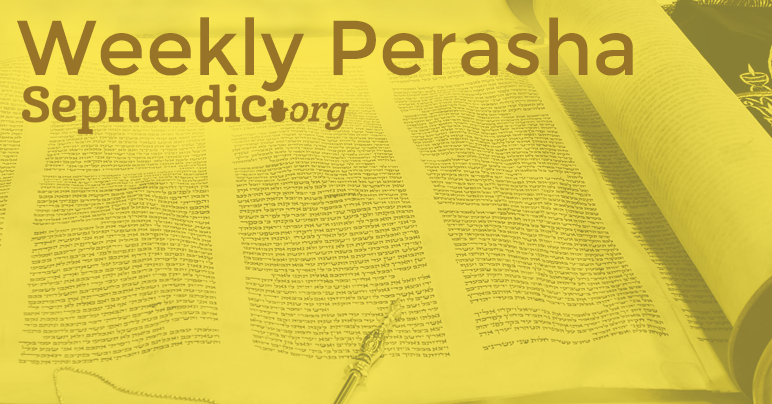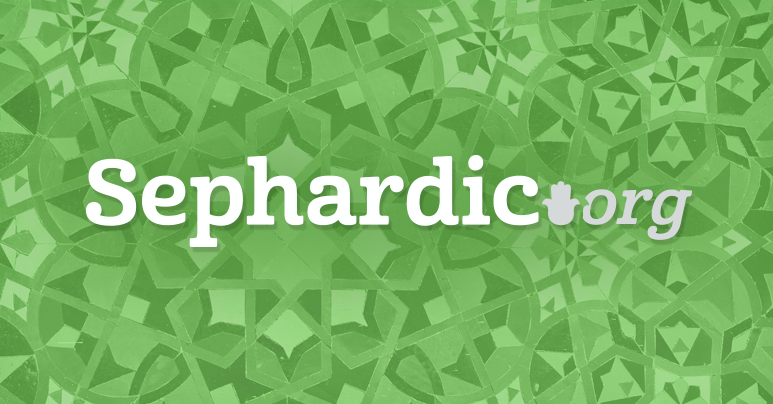
SHEMINI - HAIR CUTTING - A PREREQUISITE TO ENTERING THE HOLY
The Hinukh considers it a biblical commandment for the Kohanim not to enter the Miqdash with hair that has not been trimmed for 30 days. 1 It is based upon instructions given by Moshe to Aharon and his sons found in our parasha - Do not let your heads be over grown. 2 The Talmud teaches of an enactment instituted by the Sages to ban Kohanim from taking haircuts during the week of their temple service. This notes Rabbah Bar bar Hannah would force them into taking haircuts in advance of their service. 3 The Talmud provides a code as to the reason to require Kohanim to take haircuts - namely so that they not enter the week of their service Menuvalim - usually translated as unkempt. 4 It appears to me however, that the word Menuval is a reference to the evil one or negative forces of judgment as the Talmud relates in a couple of places. 5 Let us now reread the Talmudic teaching - "The Kohanim are required to take haircuts in advance of their service - in order to limit any access to the holiness of the sanctuary by these forces via an attachment to the head hair left unshorn for 30 days. Similarly the Sages sought to motivate people to get haircuts prior to the festival in order not to give access to the Menuvalim negative forces from entering ascending and accessing the holiness of the holiday -Kede Shelo Yikansu LaRegel Keshehen Menuvalim - Hence they forbid the general populace from cutting their hair during the intermediate days of the festival. 6 With this in mind we need to explore the mystical elements of the hair of the head; the Sages ban on haircuts during Hol Hamo’ed excluding seven categories of people; as well as the difference between the term Sapar - to trim used in reference for a Kohen and Gilu’ah - used in the context of shaving for the festival. This will allow us to properly approach the query whether the enactment and ban of the Sages regarding cutting hair prior and during the festival respectively was stated only with regards to the hair of the head or if it included the shaving of the beard as well.
MYSTICAL ELEMENTS OF THE HAIR OF THE HEAD
The Zohar teaches in the name of Rashbi that the mystical secrets concerning the hair are of the highest and most esteemed wisdom. 7 The Torah and rabbinic laws concerning the hair for each distinctive group of Israel such as the Kohen, Levi or Nazir is relative to their particular parallel divine attribute in the celestial regions. The biblical laws and rabbinic enactments are not merely methods for Israel to express their subjugation to the will of the Creator - but are tools of adherence for the spiritual pathways to flow and align properly. Since the hair of the head is usually associated with Din 8 - it is incumbent upon a Kohen to trim a growth within 30 days of his holy service. If he is lax the negative forces who have access via attachment to Din that has been allowed to fester for more than 30 days will unduly suckle from holiness. Similarly the Talmud rules that Israel must remove head hair growth of more than 30 days prior to a festival - As at this juncture there is an Aliyah LaRegel - an elevation of Israel towards holiness. If the hair is not cut in accordance with the rabbinic enactment the negative forces would likewise gain access to holiness.
SEVEN CATEGORIES WHO ARE NOT SUBJECT TO THE BAN
The Sages ban not to allow haircuts during Hol Hamo'ed excludes seven categories of people. If the hair of the head is Din - why does the enactment give these individuals special dispensation to skip the pre-festival requirement and allow them to have their hair cut during Hol Hamo'ed? According to R. HaAri the act of removing Din associated with the hair of the head should be limited to times of cosmic Hesed. We know that during all periods of Din - R. HaAri was particular not to take action to shave the hair of his head. For any action to remove Din during the time of Din can incur dangerous repercussions on the individual. 9 He was particular not to shave the hair of his head during the afternoon and night time hours 10 as was his student R. Hayim Vital during the three weeks beginning the 17th of Tammuz 11. He refrained at all costs from taking a haircut during the full 49 day period of the Omer - until Erev Shavuot. 12 Let us now read the Mishna in Mo’ed Qatan.- The following are permitted to shave - Elu Megalehin BaMo’ed - the hair (of the head) during Hol Hamo'ed since they were spiritually restricted - all being in a state of Din - Traveling across the seas, in captivity, in prison, excommunication, in the midst of a Torah law such as a vow, a mesora and nazir who have not ascended to a state of purity prior to the festival. 13 Hence, it is only these - due to their spiritual state associated with judgment who have special rabbinic dispensation to cut head hair on the festival and were resolved not to shave their heads prior to it. All others are forbidden to do so during the festival.
CLARIFYING TERMS GILU’AH TO SHAVE - SAPAR TO TRIM
It is admittedly confusing for many to come to grips that the Talmudic expression used here LeGale’ah - to shave might not be referencing the beard at all but rather the head. It makes sense that the Talmud uses the expression Lesaper - to trim - when discussing the requirement for the Kohanim to trim their hair - Anshe Mishmar Asurin MiLesaper. According to R. HaAri the soul root and service of the Kohanim is associated with Hesed. They in contrast to the Levi'im whose soul root is related to Din 14 are told to merely trim their hair - to control or temper Din. Hence they are not commanded to remove it via Gilu’ah - or shaving. As Yehezkel enjoins them - They shall not shave their heads - nor shall they allow their hair to grow wild - they shall keep their heads trimmed. 15 Israel as a whole represents a different spiritual channel and it is more proper that they shave their heads prior to entering a festival. As per a ruling by R. Yosef Hayyim in his anonymous work Torah Lishma where he discusses the preferred method via razor or scissor in removing head hair. "Surely there is a Misva to shave one's head ... According to the writings of R. HaAri the removal of hair from one's head is a great necessity. For the secret of the matter is LeGale’ah as in the secret of Gilu’ah HaLeviim - The shaving (we do today)... is a rabbinic Misva hence shaving the head with a razor is the preferred method." 16
WAS SHAVING THE BEARD PART OF THE ORIGINAL ENACTMENT?
From what we have learned so far - It is somewhat apparent that the original enactment of our Sages requiring us to shave prior to the festival was only regarding the head. One can then assert that there was and is no Misva to shave one's beard prior to the holiday. If we say that shaving the beard was or is an actual requirement then this would mean that thousands of our Rabbis who personally rejected trimming their own beards ignored this enactment of the Sages in favor of a mystical tringency? 17 - This is hard to imagine. A narrative from Sefer Shemuel depicts the importance given to beards from scripture. In an attempt of humiliation - the children of Ammon forcibly shaved half of the beards of the servants of David. The latter advising them to stay in Yeriho until they grew back. 18 - This importance of beards evidently continued until the Middle Ages as HaRav Hida himself asserts that the Tanna’im, Amora’im, and Ge’onim and later Rabbis did not trim their beards at all. 19 The Talmud extols the benefits of the beard. "The beard is an adornment of the man's face" 20. A man without a beard was compared to a Eunuck Young Kohanim whose beards had not yet grown were thought not to be not permitted to bless the people. Other restrictions for the beardless include serving as an agent for the community or leading communal prayers. 22 If we assert that there was no Talmudic enactment that one shave his beard prior to the onset of the holiday then there should be no restriction to trim it during the Hol Hamo'ed of the festival. In fact regarding this approach H. Ovadya admits ... Since during Talmudic times they did not trim their beards at all - as noted by Hida and Hatam Sofer all their words were only a reference to the hair of the head." 23
A WRENCH IN THE WORKS
There is a cryptic narrative in the Talmud that can possibly be considered as a wrench in the works. A pair of scholars came before Ribbi - They asked him whether one may cut nails ... and Shemuel says that they asked him about (cutting the hair above) the lip and he permitted it to them. Avitul the Scribe or Barber said in the name of Rav that (one may cut the hair above the) lip from one corner to the other corner of the mouth. R. Amei said that the permit applies only to the hair above the lip that blocks the passage of food. 24 There appears to be three approaches in understanding this narrative amongst the early authorities. It is a general permit to use a razor in this area - as it would not represent a violation of "You shall not destroy the edge of your beard." Alternatively it is a permit for mourners to trim their mustache. Finally the one adopted by Shulman Arukh is that it is a permit that during Hol Hamo'ed one may trim mustache hair even if it does not obstruct the passage of food. 25 If this latter view is accepted - we must ask why Ribbi needed to permit trimming the mustache on Hol hamo'ed? Why wouldn't he permit trimming on all other parts of the beard as well? This might indicate that our premise is faulty - though not clear exactly how. Alternatively - we can respond that since the Rabbi's of the Talmudic era did not trim their beards - Ribbi had to advise them that there was not a restriction on the festival to remove the hair around the lips.
SUMMARY AND CONCLUSION
The ruling of the Sages applicable to all who are in not a state of Din is to take haircuts prior to the festival. This will prevent the Menuval - the evil one (Satan) from gaining access during our spiritual ascent on the festival. This does not appear to be related to the beard which reflects a different spiritual reality - as is evidenced by the approach of the Sages not to shave their beards in honor of the festival. The confusion possibly a result of the current reality of the last half millenium - with people commonly shaving their beards and not so much their heads. The Talmudic usage of the term Gilu’ah - surely connotes cutting hair close to the skin. This was likely a reference to head hair and not as is misconstrued as related to the beard. 26 Hence we ought to see the Sages explaining that the enactment is strictly to take haircuts prior to the festival and the ban not to shave during the intermediate days of the holiday - should be relegated to the hair of the head. H. Ovadya somewhat admits to all of this in his concluding comments on the subject -"from their words (Hida and Hatam Sofer) we do not have a clear Issur regarding shaving the beard on the festival". 27 On the other hand we have to consider the teaching of Ribbi regarding the permit to trim the mustache and the view of Maran that it is concerning Hol Hamo'ed. Furthermore we know that greats of the likes of the Hida knew all what we have written here and remained steadfast against shaving the beard on Hol Hamo'ed. 28 Hence I have personally adopted the opinion of H. Ovadya who recognized the validity of our approach - but still concluded that it is better for one not to shave or trim his beard during Hol Hamo’ed "even so... those who fear heaven will heed to the latter authorities and be blessed by God." 29
Shabbat Shalom - Victor Bibi








